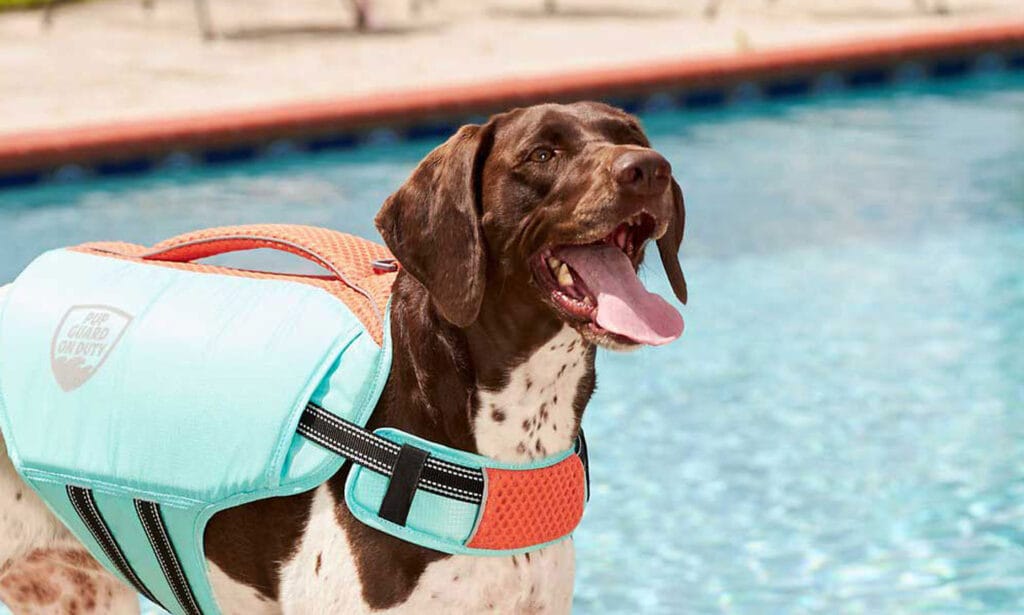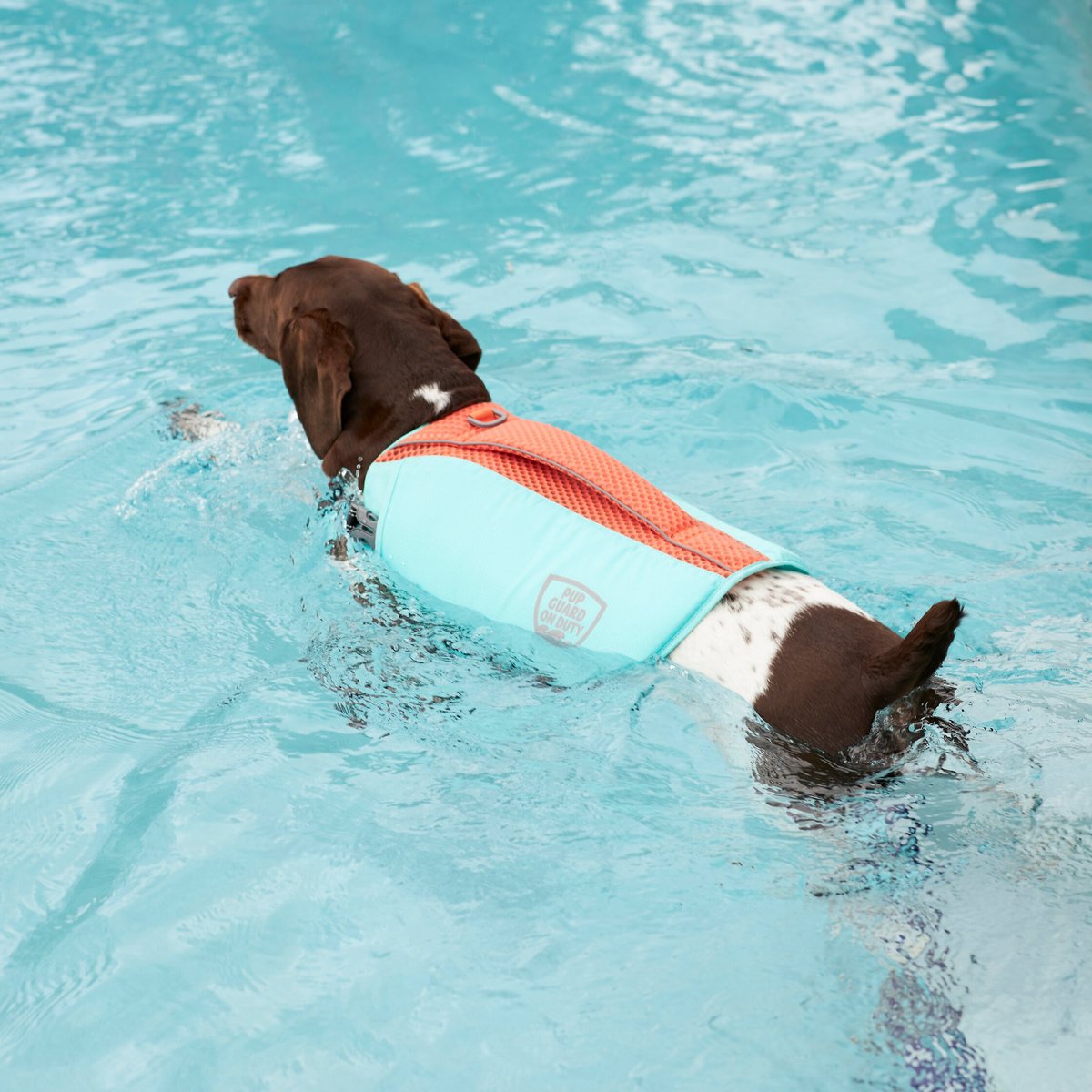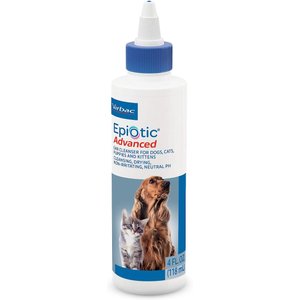Swimming pools provide endless fun for both pets and their humans, and taking a dip is a great summer activity for dogs. Just as you would supervise a child, it’s important for pet parents to keep a close eye on their dog in the pool.
We talked to three veterinarians to help us break down the ins and outs of pool time for dogs, including how to ensure your dog stays safe while living their best summer swimming life.
Should I Let My Dog Swim in the Pool?
For many dogs, swimming in the pool is a fun way to cool down and get exercise. But should you let your dog take a dip?
The short answer is yes; with a few breed exceptions, you can let your dog swim in the pool. The longer answer is that you need to take precautions, which we’ll talk about in more detail.
As for puppies, pool time is a go for them, too, but they require eagle-eye supervision and shorter swims.
Can Dogs Swim?
While many dog breeds are natural swimmers, such as Labradors and Golden Retrievers, you might be surprised to learn that Dachshunds struggle to swim, and breeds like Pugs and Bulldogs should not be allowed to swim.
- Labradors and Golden Retrievers: Labradors and Golden Retrievers were originally bred to work in water, so it makes sense that we see a lot of them flying off the pool deck with great enthusiasm and living it up with dog swimming pool toys during their doggy pool party.
- Dachshunds: Other dogs have a harder time swimming or simply can’t swim due to their anatomy. Dachshunds, for example, have long bodies and short legs and, thus, are not natural swimmers. While they can be taught to swim and some may enjoy it, they won’t become strong swimmers.
- Pugs and Bulldogs: As for dogs who aren’t meant for the pool, they include Pugs and Bulldogs. “Brachycephalic—or short-muzzled breeds—such as Pugs and Bulldogs should avoid swimming because they are at higher risk of aspirating [or inhaling] pool water,” says Monica Sterk, DVM, a veterinarian in Nanuet, New York, and the regional medical director of Northeast Veterinary Emergency Group Hospitals. “If this happens, it’s considered an emergency.”
9 Pool Safety Tips for Dogs
For pet parents who want to share their pool with their beloved pet, doing so safely is important. Keep the following tips in mind so you can have a safe summer with your doggy.
1. A Pool Fence Is the Best Defense
A secure pool fence that prevents your dog from entering the pool area on their own can be a lifesaver, says Laurie Coger, DVM, CVCP, a veterinarian in Albany, New York, and owner of The Healthy Dog Workshop.
If you’re unable to fence your pool, never leave your dog outside unattended. You may also want to consider a pool alarm, which detects unwanted access to the pool or pool area.
A pool cover is an option as well, but ensure it’s a solid safety pool cover and not a soft one.
2. Don’t Assume Your Dog Is a Strong Swimmer
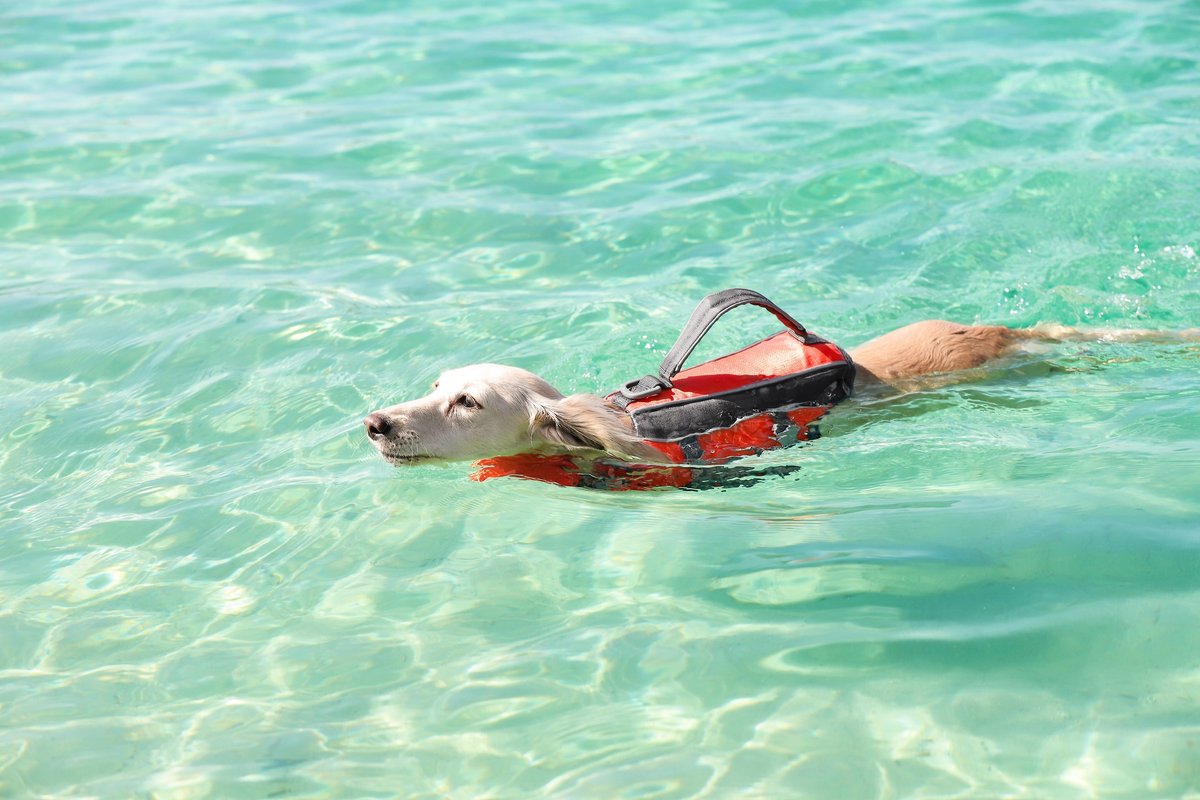
Even if your dog seems to be able to swim, it may still be difficult for them.
Additionally, strong swimmers can still become fatigued and drown. Dogs aren’t always the best at knowing their own limits.
3. Safely Introduce Your Dog to the Pool
Watch your dog’s reaction to being introduced to the pool for the first time. If your pooch refuses to go in or even near the pool, dog swimming isn’t for them.
If your dog is interested but cautious, don’t just toss them in. Doing so can injure your dog and could cause water to enter their airways. Instead, follow these steps to teach your dog how to swim.
4. Teach Your Dog to Enter—and Exit—the Pool
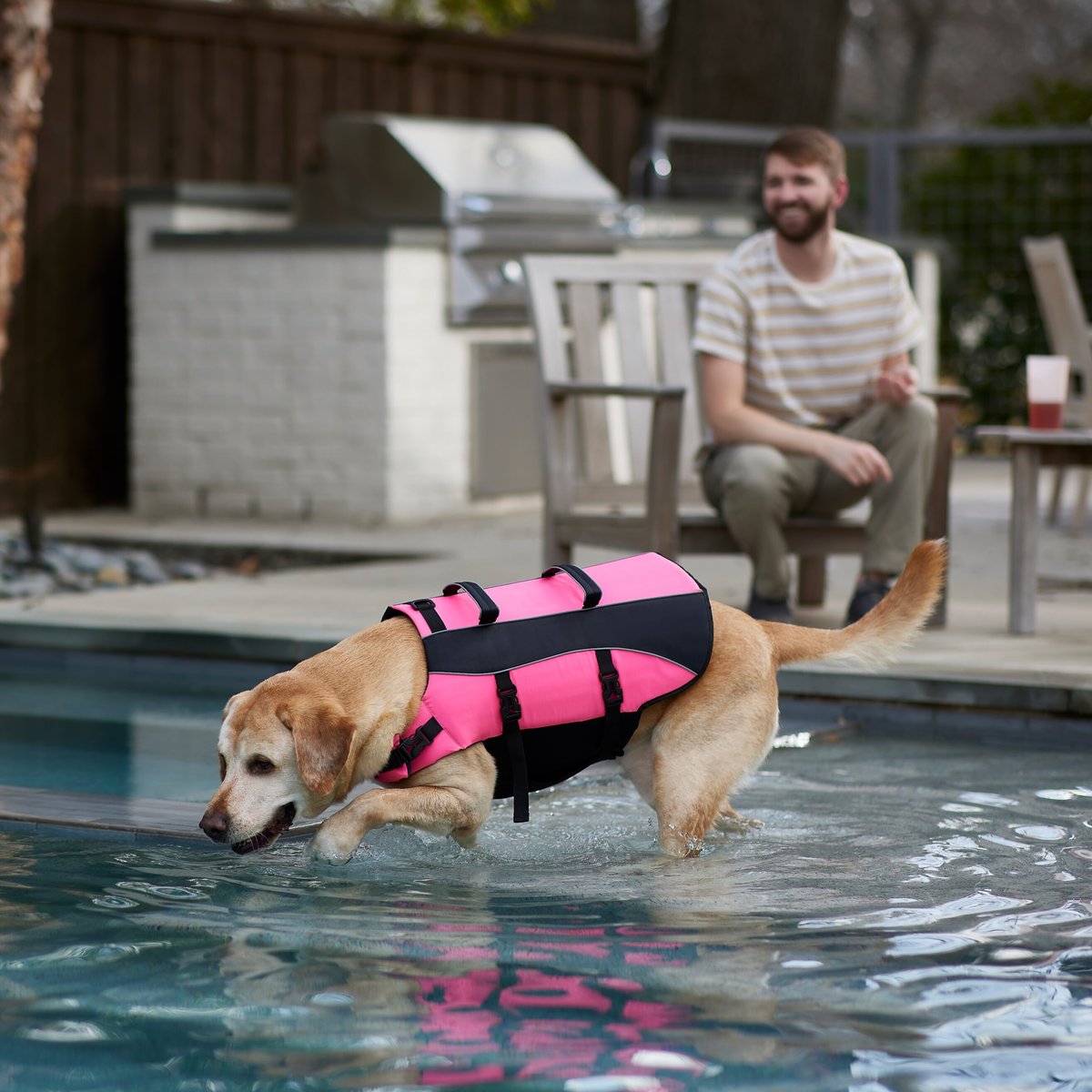
Many dogs, even natural swimmers, struggle to exit a pool. Dr. Coger says stairs are much better than pool ladders, which can be very difficult to navigate. She says dogs who cannot exit a pool will begin to panic and are at risk for drowning.
Dr. Sterk recommends repeatedly walking your dog in and out of the pool at the steps until they get the hang of it. You can also purchase a special dog pool ramp, so your dog is always able to get in and out safely.
5. Consider a Swimming Pool Float
Canine life jackets—or swimming pool floats for dogs—are an excellent tool to add to your swimming pool safety box.
While a life jacket is never a substitute for proper supervision, you’ll also want to choose a life vest that suits you and your pup’s needs. Learn how to choose the best life jacket for your dog.
Here are some of our favorite dog life jackets:
6. Be Mindful of Pool Chemicals
While chlorinated pools are generally safe for dogs for short periods, chlorine can have negative impacts on your dog. It can aggravate a dog’s ears and eyes, and can also cause skin irritation.
When pool time ends, rinse your dog with fresh water or bathe them in a soap-free shampoo, like DermAllay's oatmeal shampoo, to keep their skin and coat healthy. It’s also important to ensure the inside of their ears are dry. Using an ear cleaner that dries the ear canal, like Virbac's Epi-Otic Advanced ear cleaner, can help avoid ear infections.
7. Don’t Let Your Dog Drink Pool Water
Drinking too much chlorinated pool water can make a dog sick. Consider keeping a fresh bowl of water by the pool for your dog to drink, so they won't be tempted to drink from the pool.
“A couple licks may be harmless, but more than that can cause some gastrointestinal upset, leading to vomiting and diarrhea,” Dr. Sterk says. This is the same for saltwater pools, because too much salt can also be harmful to dogs.
Additionally, swallowing an excessive volume of water “is associated with bloat,” Dr. Coger says. Bloat is a condition where the dog’s stomach becomes overly inflated with gas. In severe cases, the dog’s stomach can twist. Bloat can be deadly and is always a medical emergency.
Dr. Coger says swallowing too much of any kind of water can cause bloat, so a dog who swims in a saltwater pool is at risk too. With bloat, the issue is the volume of water consumed, not what the water contains.
My Dog Drank Pool Water. What Do I Do?
“The occasional small sip of salt water or chlorinated water may not harm your pet, but drinking it regularly or in large volumes should be avoided,” says Sabrina Kong, DVM, certified canine rehabilitation practitioner at Jules Veterinary Center in Tracy, California.
Dr. Kong recommends watching your dogs for signs of distress after they’ve ingested pool water. “If symptoms such as vomiting or lethargy occur, it is essential to consult a veterinarian immediately,” she says.
Furthermore, when it comes to symptoms of bloat, Dr. Coger cautions, “Should a dog’s abdomen look distended, he seems uncomfortable or he’s trying to vomit with nothing coming up, seek vet care immediately.”
8. Maintain Your Pool
While dogs can swim in pools, pool owners should pay extra attention to the chlorine levels as well as the pool equipment. You want to ensure the filtration system doesn’t become clogged with dog hair.
Additionally, a dog’s sharp nails can damage vinyl pool liners, so if your pool has one, be sure to keep their nails trimmed.
9. Always Supervise Your Dog In and Around the Swimming Pool
Taking your dog in the pool is a great way to beat the heat and get some exercise when it’s too hot to go for a walk. If you decide to venture outside for a stroll under the sun, however, use these tips for walking your dog in the summer to stay safe.
Expert input provided by Monica Sterk, DVM, a veterinarian in Nanuet, New York, and the regional medical director of Northeast Veterinary Emergency Group Hospitals; Laurie Coger, DVM, CVCP, a veterinarian in Albany, New York, and owner of The Healthy Dog Workshop; and Sabrina Kong, DVM, certified canine rehabilitation practitioner at Jules Veterinary Center in Tracy, California.
This content was medically reviewed by Chewy vets.
More summer safety tips for dogs:
Share:
